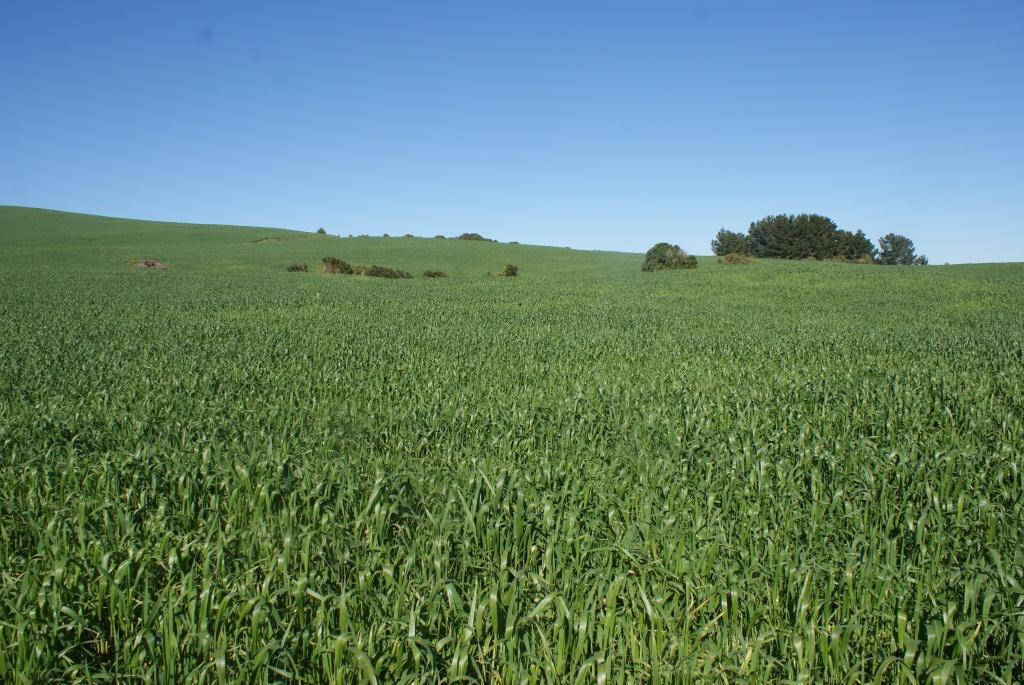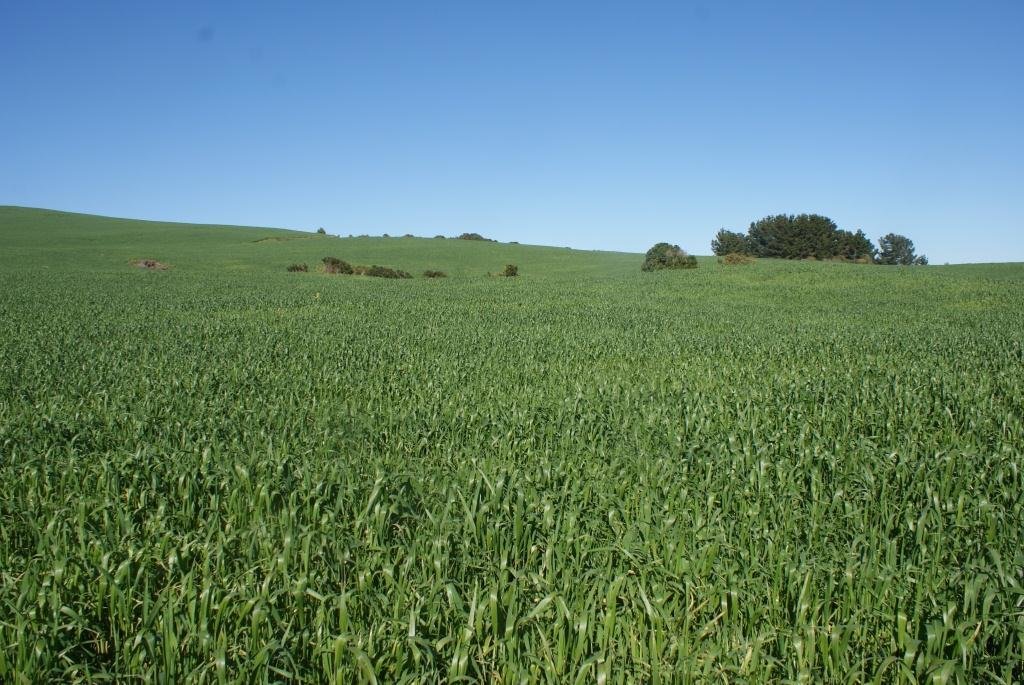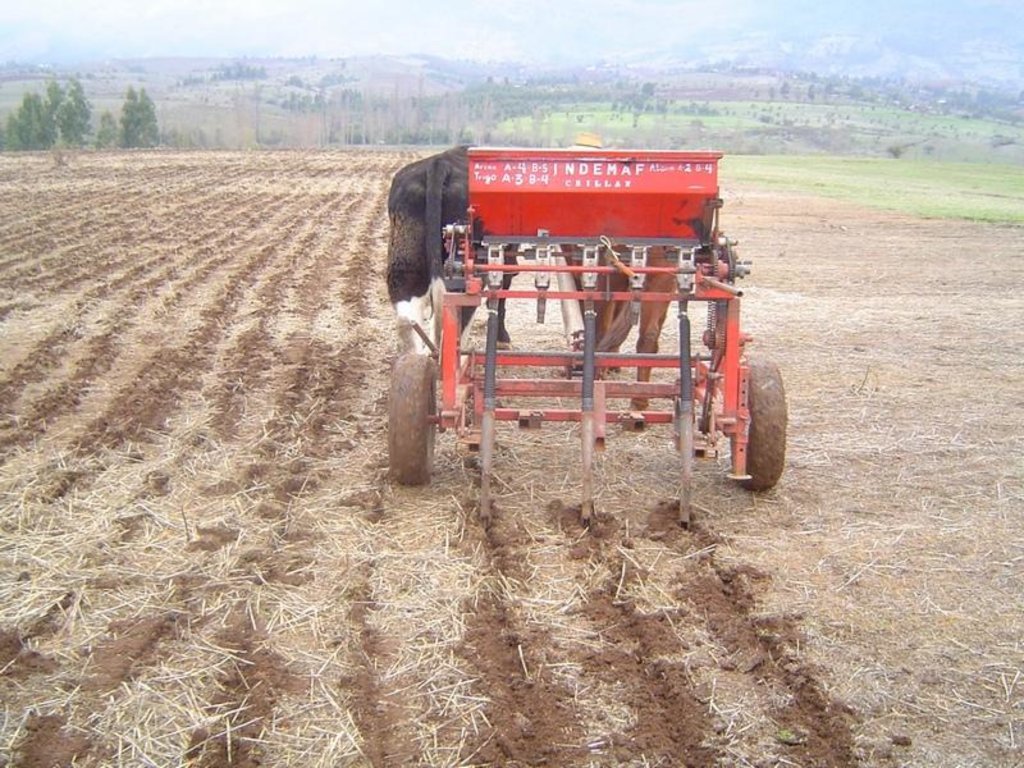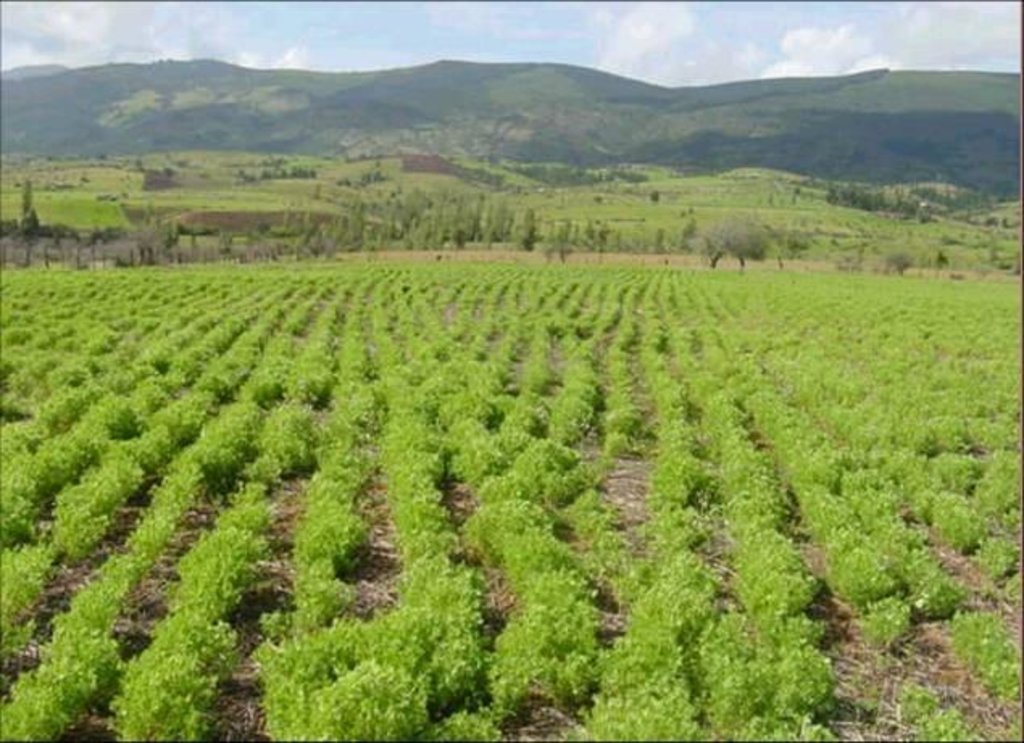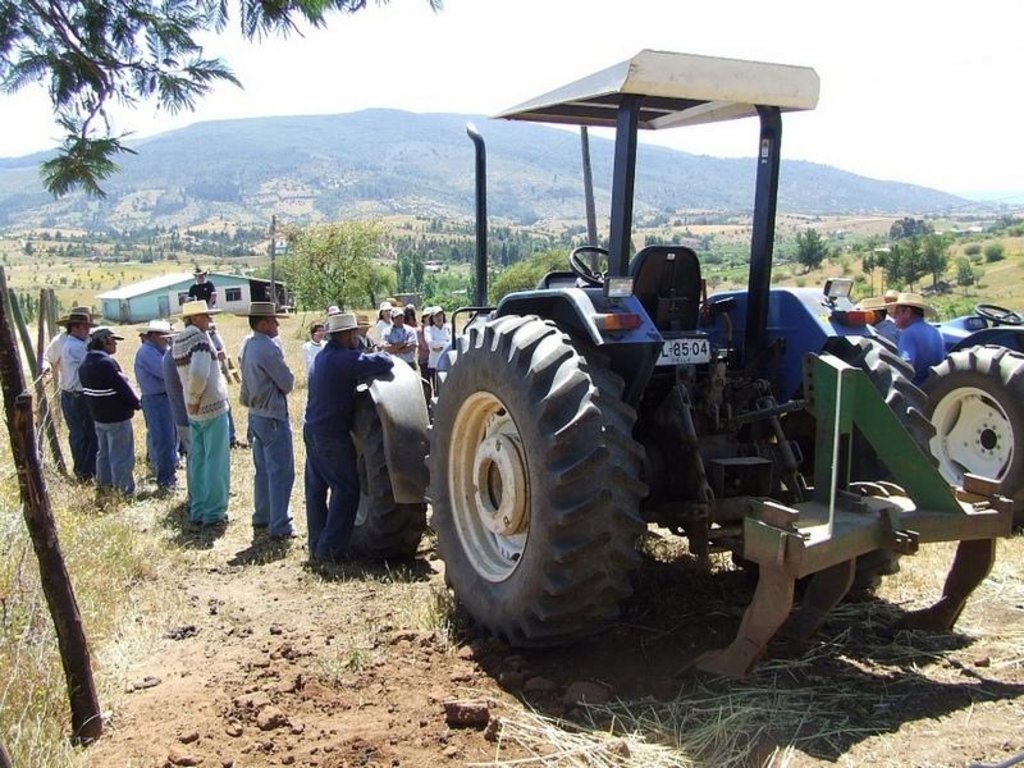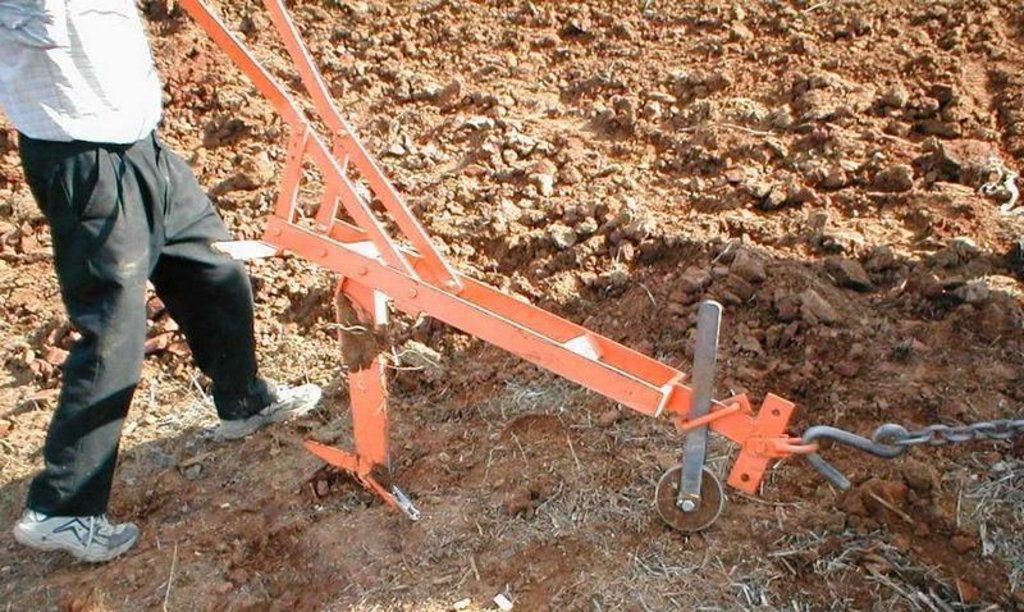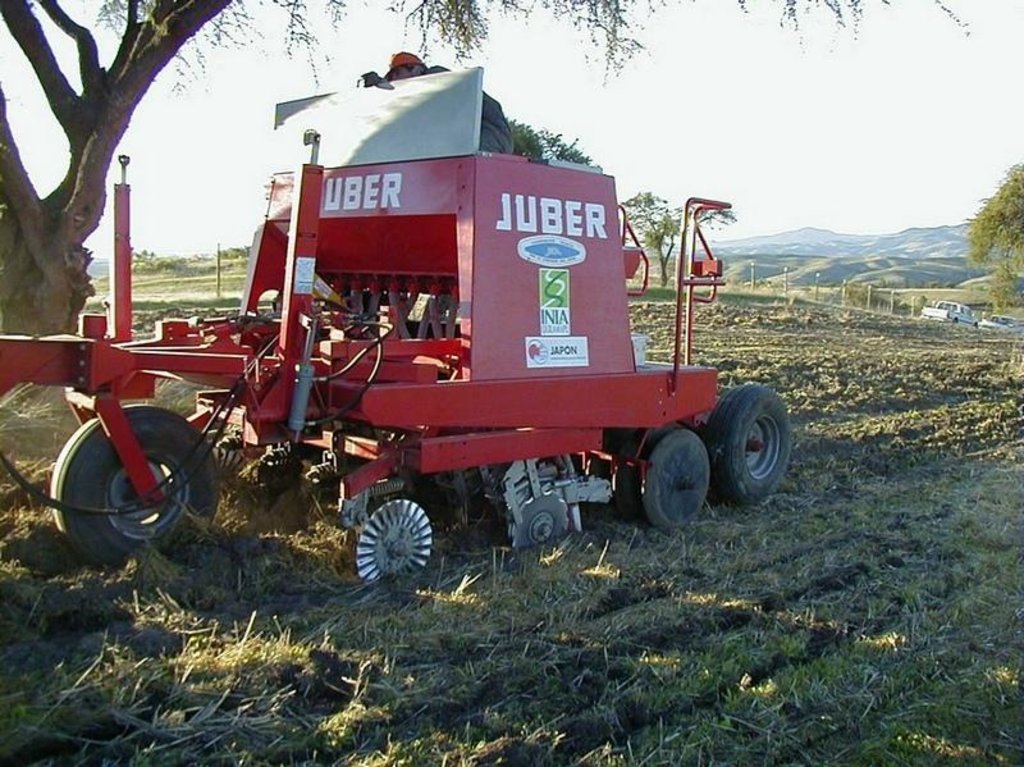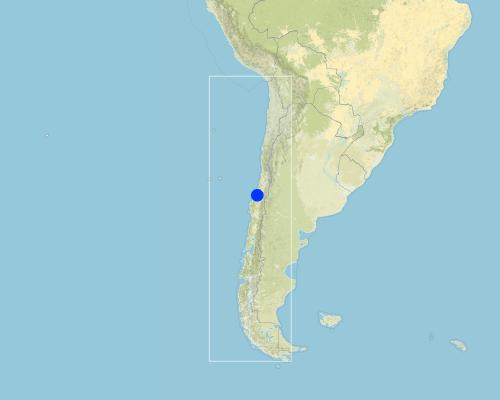No tillage preceded by subsoiling [Chile]
- Creation:
- Update:
- Compiler: Carlos Ovalle
- Editor: –
- Reviewer: David Streiff
Cero labranza con subsolado
technologies_1012 - Chile
View sections
Expand all Collapse all1. General information
1.2 Contact details of resource persons and institutions involved in the assessment and documentation of the Technology
SLM specialist:
Name of the institution(s) which facilitated the documentation/ evaluation of the Technology (if relevant)
Instituto de Investigaciones Agropecuarias (INIA) (Instituto de Investigaciones Agropecuarias (INIA)) - Chile1.3 Conditions regarding the use of data documented through WOCAT
When were the data compiled (in the field)?
03/09/2009
The compiler and key resource person(s) accept the conditions regarding the use of data documented through WOCAT:
Yes
2. Description of the SLM Technology
2.1 Short description of the Technology
Definition of the Technology:
No tillage preceded by subsoiling consists in the use of a subsoiler at a 50 cm depth every 5 years before performing no tillage agriculture.
2.2 Detailed description of the Technology
Description:
In the “secano interior” of the Mediterranean climate area of central Chile, water erosion and inappropriate agricultural systems along hillslopes are the major causes of soil degradation.
Subsoil tillage is performed with a three-pointed 50-cm chisel plough (see photo), without turning the soil. Subsoiling is needed every five years to break the hard pan after soil compaction. Then crops are directly seeded without any tillage and with stubble left on the field.
Purpose of the Technology: Subsoiling before zero tillage agriculture mitigates water erosion compared to the traditional tillage. In heavy rainfall events, zero tillage reduced soil loss by more than 72% compared to conventional tillage. In addition, the runoff coefficient during the rainy period was 70% lower with zero tillage These results show the importance of conservation tillage and crop stubble management for decreasing erosion, especially in years when extreme rainfall events lead to a high potential for soil erosion. In relation to soil compaction, comparing the resistance to penetration in the soil profile, the traditional tillage system showed a strongly compacted layer at a depth of 10 cm (>1300 kPa), which increased to over 2000 kPa at depths of 15-20 cm. In contrast, no tillage preceded by subsoiling showed less compaction, beyond 20 cm below the threshold of 2000 kPa, defined by several authors as the critical threshold for radicular growth. Moreover, cereal production showed higher biomass and grain yield. It is concluded that subsoiling before no tillage agriculture with stubble retained on the surface was the best option to mitigate soil erosion.
Establishment / maintenance activities and inputs: The main disadvantage of the system is that the farmer requires more capital to lease machinery, which in the traditional system is done with animal traction, and the horses or oxen are from their own property. However, the improved yield covers the machinery lease costs. Additionally, the system pushes small farmers into co-operatives, because it is not possible for everyone to own the equipment. To resolve this problem the project promoted the creation of small enterprises (of 10 people) to jointly purchase no-tillage machinery.
Natural / human environment: The area has a subhumid Mediterranean climate with an average annual precipitation of 695 mm (80% concentrated in winter), with five months of drought. Soils are Alfisols of the Cauquenes type, classified as Ultic Palexeralfs. The soil is made up of materials of granite origin with moderate acidic conditions and low organic carbon. Soil clay content is 15% between 0 and 18 cm depth, below this depth it is higher than 44%. Topography is a hillside with 10 to 20 % slope and the main traditional crop rotation is oat-wheat or wheat-natural pasture.
2.3 Photos of the Technology
2.5 Country/ region/ locations where the Technology has been applied and which are covered by this assessment
Country:
Chile
Region/ State/ Province:
Bíobio and Maule region
Further specification of location:
Cauquenes
Map
×2.6 Date of implementation
If precise year is not known, indicate approximate date:
- less than 10 years ago (recently)
2.7 Introduction of the Technology
Specify how the Technology was introduced:
- through projects/ external interventions
3. Classification of the SLM Technology
3.1 Main purpose(s) of the Technology
- reduce, prevent, restore land degradation
3.2 Current land use type(s) where the Technology is applied

Cropland
- Annual cropping
- Perennial (non-woody) cropping
Main crops (cash and food crops):
major cash crop: Wheat and vineyards
major food crop: Wheat

Mixed (crops/ grazing/ trees), incl. agroforestry
- Silvo-pastoralism
Main products/ services:
sheep
Comments:
Major land use problems (compiler’s opinion): The soil shows severe water erosion. 75% of the area has slope over 15% and most soils are moderately to severely eroded. Soils with low infiltration (only 4%) are very compacted, because of agricultural practices.
Major land use problems (land users’ perception): The soil presents a severe water erosion.
Mixed: (eg agro-pastoralism, silvo-pastoralism): sheep
Livestock is grazing on crop residues
If land use has changed due to the implementation of the Technology, indicate land use before implementation of the Technology:
Cropland: Ca: Annual cropping
3.3 Further information about land use
Water supply for the land on which the Technology is applied:
- rainfed
Number of growing seasons per year:
- 1
Specify:
Longest growing period in days: 300; Longest growing period from month to month: Mar-Nov
Livestock density (if relevant):
10-25 LU /km2
3.4 SLM group to which the Technology belongs
- minimal soil disturbance
3.5 Spread of the Technology
Specify the spread of the Technology:
- evenly spread over an area
Comments:
Total area covered by the SLM Technology is 10 sq km.
3.6 SLM measures comprising the Technology

agronomic measures
- A4: Subsurface treatment
Comments:
Type of agronomic measures: cover cropping, mineral (inorganic) fertilizers, breaking compacted topsoil, zero tillage / no-till
3.7 Main types of land degradation addressed by the Technology

physical soil deterioration
- Pc: compaction
Comments:
Main type of degradation addressed: Pc: compaction
Main causes of degradation: soil management, Heavy / extreme rainfall (intensity/amounts), poverty / wealth, education, access to knowledge and support service
3.8 Prevention, reduction, or restoration of land degradation
Specify the goal of the Technology with regard to land degradation:
- prevent land degradation
- reduce land degradation
Comments:
Secondary goals: mitigation / reduction of land degradation
4. Technical specifications, implementation activities, inputs, and costs
4.1 Technical drawing of the Technology
Author:
Carlos Ruiz
4.2 Technical specifications/ explanations of technical drawing
Photo of subsoiling drill.
The subsoiler is a 3-point chisel plough that breaks up the soil hardpan to a depth of 30 to 50 cm.
Location: Bíobio and Maule Region. Cauquenes, Chile
Date: 2007
Technical knowledge required for land users: high
Main technical functions: improvement of topsoil structure (compaction), increase of infiltration, increase / maintain water stored in soil
Secondary technical functions: control of raindrop splash, control of dispersed runoff: retain / trap, control of dispersed runoff: impede / retard, improvement of ground cover, increase in organic matter
Cover cropping
Material/ species: Wheat straw
Quantity/ density: 2,5 tn/ha
4.3 General information regarding the calculation of inputs and costs
Specify currency used for cost calculations:
- US Dollars
4.4 Establishment activities
| Activity | Type of measure | Timing | |
|---|---|---|---|
| 1. | No tillage machinery | ||
| 2. | Subsoiling every 5 years |
4.5 Costs and inputs needed for establishment
| Specify input | Unit | Quantity | Costs per Unit | Total costs per input | % of costs borne by land users | |
|---|---|---|---|---|---|---|
| Labour | Subsoiling | unit | 1.0 | 50.0 | 50.0 | 100.0 |
| Equipment | Renting seeder machine | unit | 1.0 | 60.0 | 60.0 | |
| Equipment | Renting subsoiling machine | unit | 1.0 | 70.0 | 70.0 | |
| Total costs for establishment of the Technology | 180.0 | |||||
4.6 Maintenance/ recurrent activities
| Activity | Type of measure | Timing/ frequency | |
|---|---|---|---|
| 1. | Herbicide application | Agronomic | |
| 2. | Seeding | Agronomic | |
| 3. | Fertilization | Agronomic |
4.7 Costs and inputs needed for maintenance/ recurrent activities (per year)
| Specify input | Unit | Quantity | Costs per Unit | Total costs per input | % of costs borne by land users | |
|---|---|---|---|---|---|---|
| Labour | Herbicide application | unit | 1.0 | 20.0 | 20.0 | |
| Equipment | Renting seeder machine | unit | 1.0 | 60.0 | 60.0 | |
| Plant material | Seeds | unit | 1.0 | 50.0 | 50.0 | |
| Fertilizers and biocides | Fertilizer | unit | 1.0 | 174.0 | 174.0 | |
| Fertilizers and biocides | Herbicide | unit | 1.0 | 20.0 | 20.0 | |
| Total costs for maintenance of the Technology | 324.0 | |||||
Comments:
Machinery/ tools: Animal traction and No tillage machine
4.8 Most important factors affecting the costs
Describe the most determinate factors affecting the costs:
Availability of machinery is the most determining factor affecting the costs.
5. Natural and human environment
5.1 Climate
Annual rainfall
- < 250 mm
- 251-500 mm
- 501-750 mm
- 751-1,000 mm
- 1,001-1,500 mm
- 1,501-2,000 mm
- 2,001-3,000 mm
- 3,001-4,000 mm
- > 4,000 mm
Specifications/ comments on rainfall:
80% rainfall between May - August
Agro-climatic zone
- sub-humid
Thermal climate class: temperate
5.2 Topography
Slopes on average:
- flat (0-2%)
- gentle (3-5%)
- moderate (6-10%)
- rolling (11-15%)
- hilly (16-30%)
- steep (31-60%)
- very steep (>60%)
Landforms:
- plateau/plains
- ridges
- mountain slopes
- hill slopes
- footslopes
- valley floors
Altitudinal zone:
- 0-100 m a.s.l.
- 101-500 m a.s.l.
- 501-1,000 m a.s.l.
- 1,001-1,500 m a.s.l.
- 1,501-2,000 m a.s.l.
- 2,001-2,500 m a.s.l.
- 2,501-3,000 m a.s.l.
- 3,001-4,000 m a.s.l.
- > 4,000 m a.s.l.
5.3 Soils
Soil depth on average:
- very shallow (0-20 cm)
- shallow (21-50 cm)
- moderately deep (51-80 cm)
- deep (81-120 cm)
- very deep (> 120 cm)
Soil texture (topsoil):
- medium (loamy, silty)
Topsoil organic matter:
- low (<1%)
If available, attach full soil description or specify the available information, e.g. soil type, soil PH/ acidity, Cation Exchange Capacity, nitrogen, salinity etc.
Soil fertility is very low
Soil drainage / infiltration is good
Soil water storage capacity is low
5.4 Water availability and quality
Ground water table:
5-50 m
Availability of surface water:
poor/ none
Water quality (untreated):
good drinking water
5.5 Biodiversity
Species diversity:
- medium
5.6 Characteristics of land users applying the Technology
Market orientation of production system:
- mixed (subsistence/ commercial
Off-farm income:
- 10-50% of all income
Relative level of wealth:
- poor
Individuals or groups:
- individual/ household
Level of mechanization:
- animal traction
- mechanized/ motorized
Gender:
- men
Indicate other relevant characteristics of the land users:
Land users applying the Technology are mainly Leaders / privileged
Population density: 10-50 persons/km2
Annual population growth: < 0.5%
and own 60% of the land.
5.7 Average area of land owned or leased by land users applying the Technology
- < 0.5 ha
- 0.5-1 ha
- 1-2 ha
- 2-5 ha
- 5-15 ha
- 15-50 ha
- 50-100 ha
- 100-500 ha
- 500-1,000 ha
- 1,000-10,000 ha
- > 10,000 ha
Is this considered small-, medium- or large-scale (referring to local context)?
- small-scale
5.8 Land ownership, land use rights, and water use rights
Land ownership:
- individual, titled
Land use rights:
- individual
Water use rights:
- individual
5.9 Access to services and infrastructure
health:
- poor
- moderate
- good
education:
- poor
- moderate
- good
technical assistance:
- poor
- moderate
- good
employment (e.g. off-farm):
- poor
- moderate
- good
energy:
- poor
- moderate
- good
roads and transport:
- poor
- moderate
- good
drinking water and sanitation:
- poor
- moderate
- good
financial services:
- poor
- moderate
- good
6. Impacts and concluding statements
6.1 On-site impacts the Technology has shown
Socio-economic impacts
Production
crop production
risk of production failure
land management
Income and costs
expenses on agricultural inputs
farm income
workload
Socio-cultural impacts
food security/ self-sufficiency
community institutions
SLM/ land degradation knowledge
livelihood and human well-being
Comments/ specify:
mproved tillage improves crop yields and thus household income increases
Ecological impacts
Water cycle/ runoff
surface runoff
Soil
soil cover
soil loss
soil crusting/ sealing
soil compaction
nutrient cycling/ recharge
soil organic matter/ below ground C
Biodiversity: vegetation, animals
biomass/ above ground C
6.2 Off-site impacts the Technology has shown
water availability
6.3 Exposure and sensitivity of the Technology to gradual climate change and climate-related extremes/ disasters (as perceived by land users)
Gradual climate change
Gradual climate change
| Season | Type of climatic change/ extreme | How does the Technology cope with it? | |
|---|---|---|---|
| annual temperature | increase | well |
Climate-related extremes (disasters)
Meteorological disasters
| How does the Technology cope with it? | |
|---|---|
| local rainstorm | well |
Climatological disasters
| How does the Technology cope with it? | |
|---|---|
| drought | not well |
Comments:
It is necessary to realize subsoiling to improve the yields
6.4 Cost-benefit analysis
How do the benefits compare with the establishment costs (from land users’ perspective)?
Short-term returns:
positive
Long-term returns:
positive
How do the benefits compare with the maintenance/ recurrent costs (from land users' perspective)?
Short-term returns:
positive
Long-term returns:
positive
6.5 Adoption of the Technology
- 10-50%
If available, quantify (no. of households and/ or area covered):
100 households
Of all those who have adopted the Technology, how many have did so spontaneously, i.e. without receiving any material incentives/ payments?
- 0-10%
Comments:
100% of land user families have adopted the Technology with external material support
100 land user families have adopted the Technology with external material support
There is no trend towards spontaneous adoption of the Technology
6.7 Strengths/ advantages/ opportunities of the Technology
| Strengths/ advantages/ opportunities in the compiler’s or other key resource person’s view |
|---|
|
No tillage preceded by subsoiling as part of the incentive programme for the recovery of degraded soils managed by the Agriculture and Livestock Service (SAG) How can they be sustained / enhanced? Adjusting incentives according to timing of the expenses and investments and also conditioning incentives to the adoption of the technologies |
6.8 Weaknesses/ disadvantages/ risks of the Technology and ways of overcoming them
| Weaknesses/ disadvantages/ risks in the compiler’s or other key resource person’s view | How can they be overcome? |
|---|---|
| The availability of machines is the main obstacle for adopting zero tillage and subsoiling | To create and promote small companies of agricultural machinery, managed by farmers themselves. Two examples already exist in the counties of San Carlos and Ninhue. |
7. References and links
7.2 References to available publications
Title, author, year, ISBN:
www.inia.cl/link.cgi/GEAM
Title, author, year, ISBN:
www.inia.cl/proyectocadepa
Title, author, year, ISBN:
- Del Pozo, A., Del Canto, P. 1999. Areas agroclimaticas y sistemas productivos en la VII y VIII Región. (INIA)
Available from where? Costs?
adelpozo@utalca.cl
Title, author, year, ISBN:
- Stolpe, Neal. 2006. Descripciones de los principales suelos de la VIII R de Chile. Depto. De Suelos y Rec. Naturales. Universidad de Concepción.
Available from where? Costs?
nstolpe@udec.cl
Links and modules
Expand all Collapse allLinks
No links
Modules
No modules


